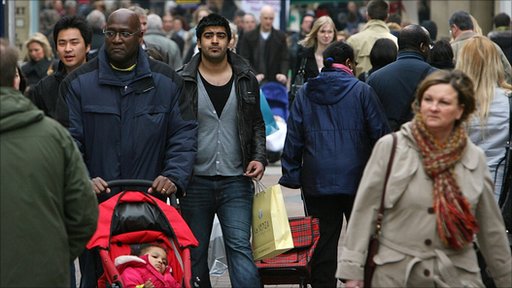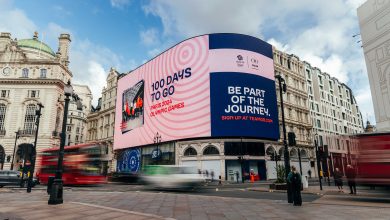Blimey, don’t tell UKIP’s Nigel Farage about this. Britain’s ethnic ‘minorities’ are growing so rapidly that they won’t be that minor in years to come and – according to a new report from the IPA – it’s time advertisers woke up to the fact.
The report, an updated version of The New Britain, says that Britain is more culturally diverse than ever before – and the time has come for marketers to take full advantage of the opportunities presented by a growing black and minority ethnic (BME) population.
This at a time when the UK’s minority ethnic population has grown to more than eight million – nearly 13 per cent of the total.
BME groups in this country will be twice as large in 30 years’ time (2045) as they are today, according to forecasts. And they are also changing with Poles, Romanians, Lithuanians, Arabs, Chinese and Filipinos adding to a settled Afro-Caribbean and Asian population. One-in-four new babies born in England and Wales now has a foreign-born mother.


The New Britain updates the IPA’s Multicultural Britain report published in 2012, further exploring the BME’s spending habits. It looks, for the first time, at language and length of residency in the UK to provide insight into generational differences.
It also highlights concerns that many mainstream companies are not using an increasingly dynamic ethnic media to target BME groups despite research showing ethnic audiences would be 60 per cent more likely to buy a product or service if it were advertised in their media.
Sanjay Shabi, MediaCom head of CultureCom Sanjay Shabi, one of the authors of the report, says: “Renewed economic confidence and ongoing maturity within the ethnic media landscape has resulted in ethnic media becoming increasingly more dynamic. We are seeing more product development within the digital sphere, a continuing rise in different types of TV stations and the evolution of broadcasted content addressing the needs and interests of British-based ethnic groups.”
Increasingly, BME groups are turning towards media created specifically for them, The New Britain says 77 per cent of British Asians surveyed feel mainstream advertising has no relevance to them.
IPA director general Paul Bainsfair says: “The nature of the UK population has changed enormously over the past decade and this presents not only challenges but also great opportunities for advertisers and marketers.
“We, as an industry, now recognise that the BME population is an important and dynamic market. We are striving to better understand this market and to communicate in a more relevant and effective way.”
The country’s ethnic diversity is increasingly being reflected in the country’s ad agencies where the percentage of staff from ethnic minorities – currently 11.2 per cent – is growing steadily closer to the national average (13 per cent).
The report also challenges three marketing myths about ethnic minorities:
Myth No 1 – They don’t spend
While ethnic minorities don’t earn as much on average as their white counterparts, this is by no means universally true. British Indian men have an average higher income than the average White Briton.
Myth No 2 – They behave the same as whites
That’s not true either in the media they consume or in their other behaviour. Only 18 per cent of ethnic minorities in Britain solely watch mainstream TV. Sixteen per cent only watch ethnic programming.
Myth No 3 – They are too hard to target
It’s wrong to believe there are too many differences between ethnic groups to target them effectively. There’s a lot of business to be had with relatively cheap, well-targeted campaigns.
Other highlights include:
* At 7.8 million people, the BME population in England and Wales is larger than the total populations of Scotland and Northern Ireland combined.
* Two-in-5 BME people live in London compared with one-in-10 white people.
* English is still the main language of 92 per cent of the population. Even those who have non-English as a main language can speak English well.
* Ethnic minorities tend to be younger and more urban than their white counterparts and are much more likely to be early adopters.
* Asians have the highest rates of internet use, broadband penetration and PC usage in the country.
On the ethnic media scene:
* Ethnic media is becoming increasingly dynamic with a continued rise in different types of TV stations and the evolution of broadcast content.
* 56 TV channels have become available to South Asian audiences in the past four years. Virtually all are free-to-air services.
* Poles living in Britain are light mainstream TV viewers and are much more reliant on native TV programming.
* Many ethnic media owners no longer specialise in one media type such as newspapers or TV but are branching out.
* Much ethnic media can now be packaged and bundled together for centralised media buying.
* Research data on ethnic media is too unreliable. Greater use should be made of digital to track numbers against an advertiser’s plan and objectives.
The New Britain publication is available to purchase from the IPA website. It costs £25 for IPA members and £50 for non-members.









